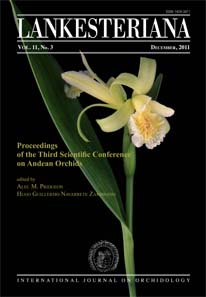What will be left of the primary forest in Ecuador?
DOI:
https://doi.org/10.15517/lank.v11i3.18307Keywords:
Conservation, forest, EcuadorAbstract
Ecuador is among the smallest countries of South America (250,000 square kilometers) but has the highest density of human population with the highest network of primary and secondary roads, which also explains why Ecuador has the highest slash-and-burn ratio per capita in America (about 250,000 hectares per year). Over 20% of the country’s surface has been declared as natural private and government reserves, where at least 2/3 of the area is totally inaccessible and has never been botanized. Thus, a large percentage of the approximate 1000 endemic orchid species described to date for Ecuador are probably not growing in these reserves. The remaining 80% of land is subdivided into 843,000 land ownerships, of which only 4% are parcels over 50 hectares. It can be concluded that no primary forests outside the reserves will survive the near future and respective endemic species will become extinct in nature. Ex-situ conservation is imperative.
Downloads
Downloads
Published
How to Cite
Issue
Section
License
According to the Open Access policy promoted by the University of Costa Rica, all the papers published by Lankesteriana are licensed under the Creative Commons copyright and can be downloaded free of charge. The journal holds copyright and publishing rights under the CC BY-NC-ND 3.0 CR license.
Before the publication of the materials submitted by the author(s) in LANKESTERIANA, the author(s) hereby assign all rights in the article to the Lankester Botanical Garden.





